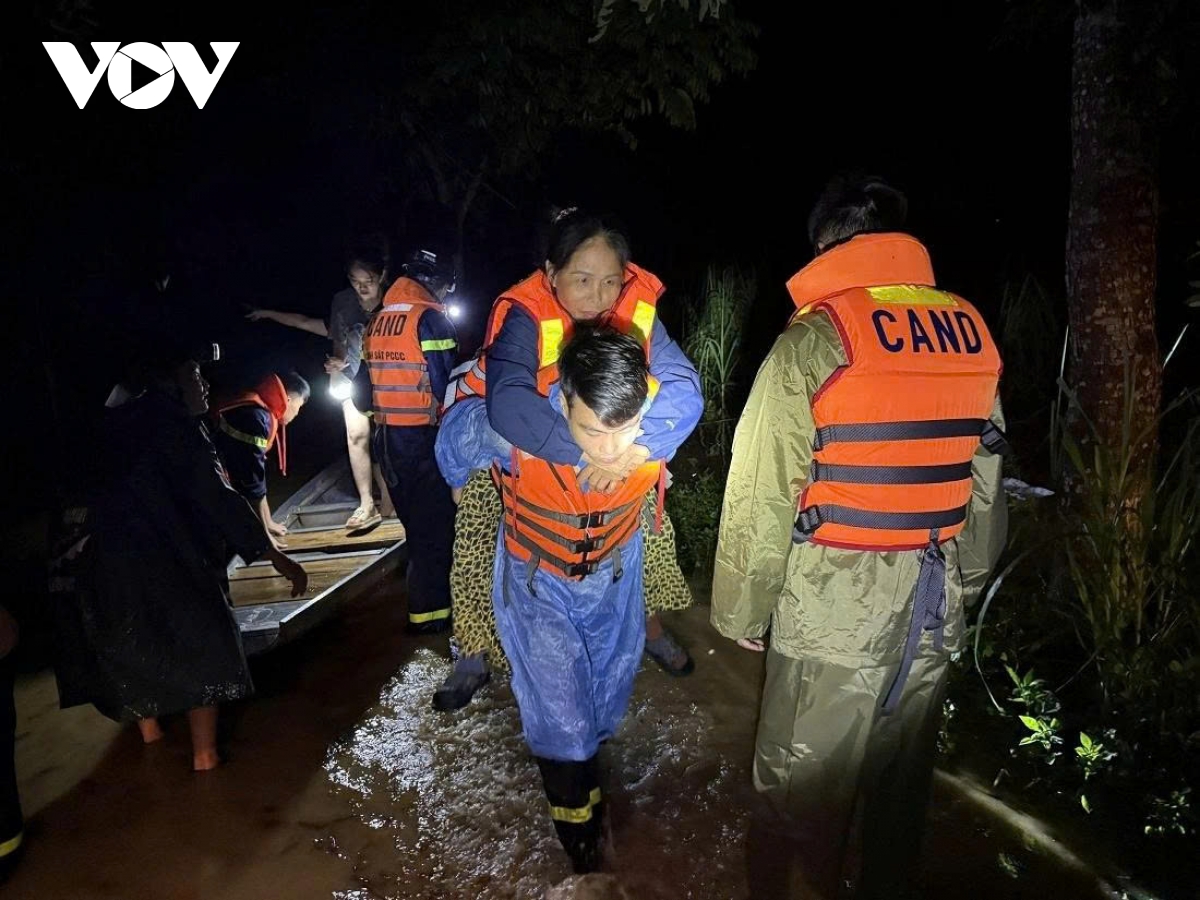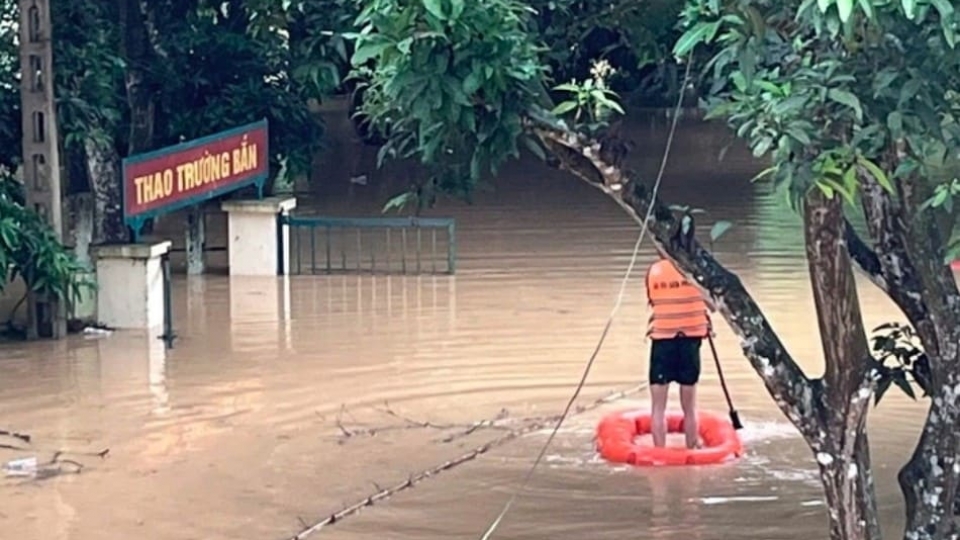Flash floods, landslides leave three dead, one missing in Nghe An
VOV.VN - Flash floods and landslides triggered by heavy rain in the wake of typhoon Wipha have caused huge human and property losses in Nghe An province, leaving three dead, one missing and four injured.

The disaster has also damaged 417 houses and submerged re than 3,200 others across the province, according to local authorities at a meeting on July 23.
Thousands of households have been relocated by local communes to safe shelters. Many communes such as Tuong Duong, Tam Quang, Chau Khe, Huu Khuong, Keng Du, My Ly, Huu Kiem, bac Ly, Muong Tip, Nhon Mai, Tam Quang and Con Cuong remain isolated, cut off, and completely without electricity.
Due to the impact of typhoon Wipha, heavy rain has lashed various communes across Nghe An province, causing flooding, inundation, and landslides. Rainfall measured at meteorological and hydrological stations from 7:00 p.m. on July 21 to 7:00 p.m. on July 22 ranged from 100mm to 200mm, with some areas recording over 250mm.
At the July 23 meeting, the provincial leadership requested all localities and units to maintain round-the-clock duty and implement the highest level of response measures, with priority to be given to ensuring the safety of people's lives and property.
They called for continued inspection of residential areas along rivers, streams, and zones prone to flash floods, landslides, and inundation, particularly downstream communes, in order to prepare timely evacuation plans. In necessary cases, compulsory evacuation may be enforced. Forces should be mobilised to assist in relocating residents and their property upon request.
Efforts must be made to reach isolated villages to provide essential goods for local people. Plans should be put in place to ensure environmental sanitation, disinfection, disease prevention, food safety and hygiene, and post-flood clean-up.
Hydropower plants were instructed to closely monitor water levels, strictly comply with discharge protocols, and promptly inform local authorities so that residents in affected areas can be alerted in time.






